
.png)

.png)
.png)


-
.png) 0086-757-85407388
0086-757-85407388 -

-
 terrychen@wintoly.com
terrychen@wintoly.com


.png)

.png)
.png)


.png)



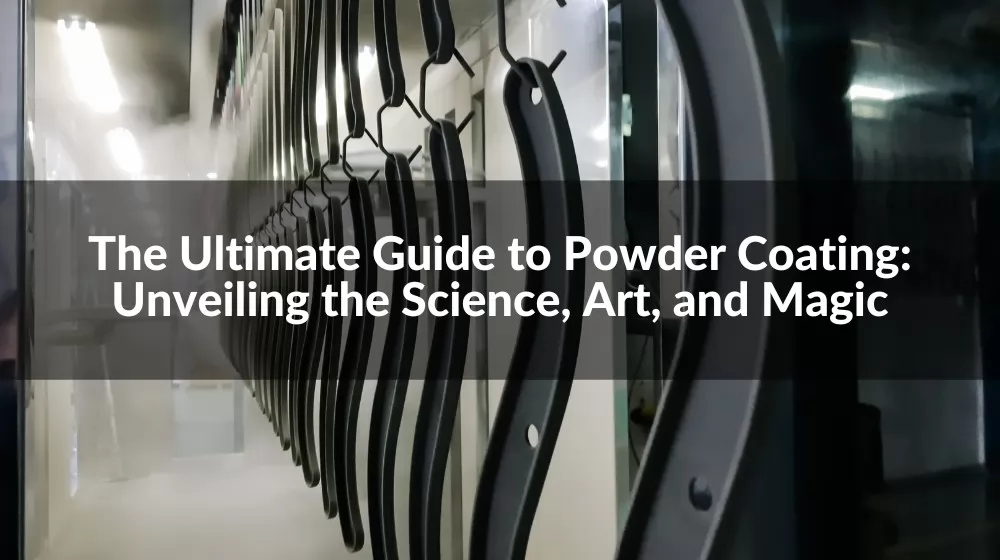
Welcome to the fascinating world of powder coating, where innovation meets efficiency and sustainability. In this comprehensive guide, we'll unravel the intricacies of powder coating, from its fundamental principles to the latest trends and technologies. As a leading technique in surface finishing, powder coating offers unparalleled benefits in terms of durability, environmental friendliness, and aesthetic versatility. Whether you're a seasoned industry professional or new to the realm of powder coatings, this guide, presented by a premier powder coating manufacturer, provides insightful knowledge and practical advice to navigate through this dynamic field.
When we talk about powder coating, we're diving into a world where durability meets aesthetics. It's a process far superior to traditional painting, offering a sleek, robust finish that stands the test of time. But what exactly is powder coating, and why is it the go-to choice for discerning manufacturers and designers alike?
At its core, powder coating involves applying a dry powder – typically a mixture of finely ground particles of pigment and resin – to a surface. Unlike conventional liquid paint, it doesn't require a solvent to keep the binder and filler parts in a liquid suspension form. This fundamental difference is where powder coating shines, both in terms of efficiency and environmental friendliness.
The application process is ingenious. The powder is electrostatically charged and sprayed onto the object to be coated. Thanks to this charge, the powder particles cling to the surface, covering every nook and cranny with an even layer. The magic happens in the curing process, where the coated object is heated in a curing oven. This heat triggers a chemical reaction that causes the powder to bond together and adhere to the surface, forming a hard, durable coating that is resistant to scratches, chipping, fading, and wear.
But why choose powder coating over traditional methods? For starters, its durability is unparalleled. The coating forms a thicker, more consistent layer without running or sagging. Its environmental credentials are also noteworthy. Powder coating doesn't involve harmful solvents or release volatile organic compounds (VOCs) into the atmosphere, making it a much greener option.
As a leading powder coating manufacturer, we understand these benefits are not just theoretical. They translate into real-world advantages – longer-lasting products, cost-effective production, and a smaller environmental footprint. It's not just a coating process; it's a commitment to quality and sustainability.
In the following chapters, we'll delve deeper into the intricacies of powder coating, exploring its application, benefits, and why it's an essential choice for businesses looking for a blend of durability and aesthetic appeal in their products.
To truly appreciate the value of powder coating, it's essential to grasp its basic principles and how it stands apart from traditional painting methods. Powder coating is not just a process; it's an innovative solution that combines efficiency with environmental responsibility.
So, what is powder coating? In simple terms, it's a dry finishing process used extensively to coat a wide range of products, providing a high-quality, durable finish. The key lies in its use of powder – a blend of finely ground particles of pigment and resin, which are electrically charged and sprayed onto the surface to be coated. This process results in a coating that is uniform, attractive, and tough, able to withstand harsh conditions better than traditional paint.
When compared to traditional liquid painting, powder coating offers several compelling advantages. One of the most significant is its environmental friendliness. Traditional liquid paints contain solvents, which have volatile organic compounds (VOCs) that are harmful to both the environment and human health. Powder coating, on the other hand, contains no solvents and releases negligible amounts of VOCs, if any.
The durability of powder coating is also far superior. It forms a thicker, more consistent layer that is more resistant to scratching, chipping, and wear. This robustness extends the life of the coated product, reducing the need for frequent repainting or maintenance. Additionally, the powder coating process has a higher material utilization rate since any overspray can be collected and reused, minimizing waste.
Aesthetically, powder coatings provide a wide range of finishes – from high gloss to matte, and even textures that can hide surface imperfections. This versatility, coupled with its environmental and durability benefits, makes powder coating a preferred choice for various industries, including automotive, appliances, furniture, and more.
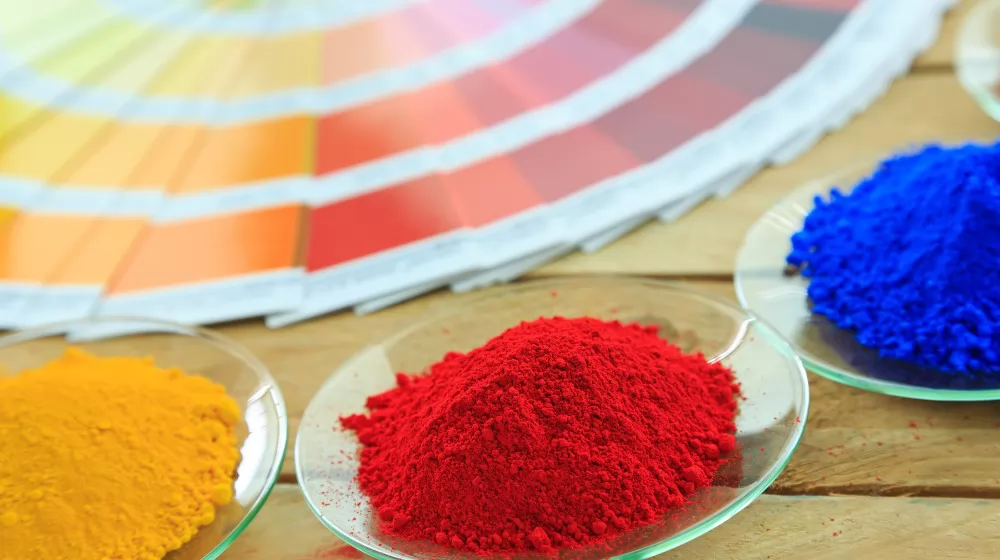
Delving into the world of powder coatings, we find a diverse range of options, each tailored to specific requirements and applications. Broadly speaking, powder coatings fall into two main categories: thermoset and thermoplastic. Understanding these types is crucial for selecting the right coating for your project, ensuring optimal performance and longevity.
Thermoset powder coatings are widely used due to their durability and resistance to high temperatures, chemicals, and UV rays. When a thermoset powder is cured under heat, it undergoes a chemical reaction that creates a cross-linked polymer structure. This reaction is irreversible, meaning the coating will not melt and flow when subsequently exposed to heat. Thermoset coatings are ideal for applications where a tough, protective layer is essential, such as in automotive parts, home appliances, and outdoor furniture.
Thermoplastic powder coatings, on the other hand, do not undergo any chemical change when heated and cooled. This means they can be remelted and reshaped if needed. These coatings are known for their flexibility, impact resistance, and ability to be reprocessed. Common applications include coatings for playground equipment, shopping carts, and some automotive parts. Thermoplastics are particularly useful in applications where flexibility and the ability to absorb impacts are more important than the highest degree of chemical resistance.
To truly appreciate the advantages of powder coating, it's important to delve into the science behind it. This involves understanding its chemical composition and the properties that set it apart from conventional coatings.
Powder coating is a complex blend of resins, pigments, curatives, leveling agents, flow modifiers, and other additives. Each ingredient plays a vital role in the coating's final appearance, durability, and application characteristics. Resins, for instance, provide the primary structure and determine the physical properties of the coating. Pigments add color and affect opacity, while curatives are essential for cross-linking the resin during the curing process, providing the final coating with its strength and durability.
The properties of powder coatings are a testament to their unique composition. They exhibit excellent adhesion, uniform appearance, and high resistance to corrosion, chemicals, and weathering. The absence of solvents in powder coatings also means they have a higher concentration of solid components, leading to a thicker and more protective finish in a single application.
When comparing powder coating to conventional liquid coatings, two key aspects stand out: durability and efficiency. Powder coatings are inherently more durable than liquid coatings. They form a stronger bond with the substrate and are less prone to chipping, scratching, and fading. This resilience translates into a longer lifespan for the coated product, reducing the need for maintenance and repainting.
In terms of efficiency, powder coatings are a clear winner. The process has a higher transfer efficiency rate, meaning more of the coating ends up on the product, with minimal overspray. Any excess powder can be collected and reused, reducing waste. Furthermore, the curing process is faster and consumes less energy compared to drying liquid coatings, enhancing overall productivity.
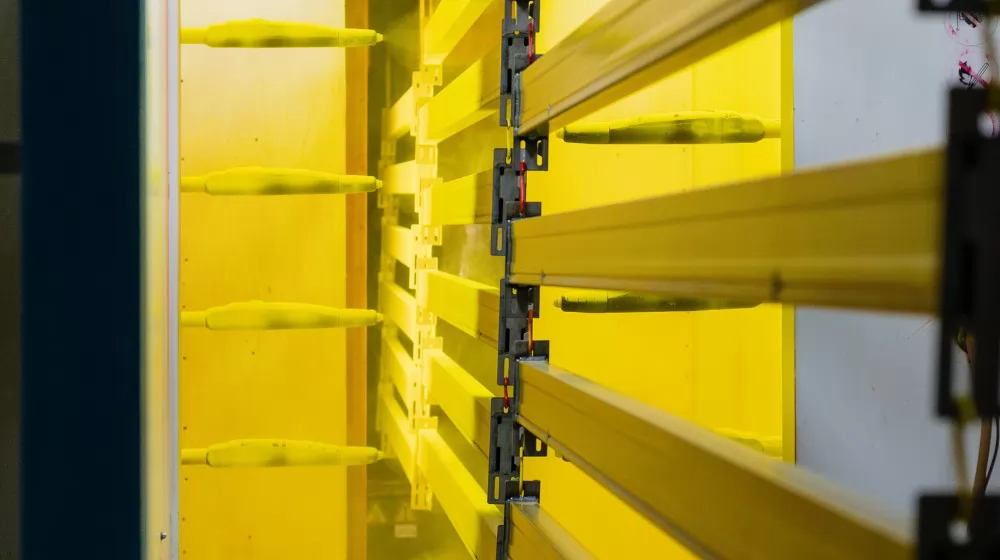
Achieving the best results in powder coating is not just about the application and curing process. It's equally about the preparation that goes into ensuring that surfaces are perfectly ready for coating. This stage is crucial in ensuring the longevity and effectiveness of the powder coating.
The surface preparation for powder coating involves a series of steps designed to clean and condition the material's surface. This typically includes degreasing, removing old paint, rust removal, and sandblasting. Each of these processes serves to remove contaminants that could interfere with the adhesion of the powder coating. For materials like steel, mechanical abrasion like sandblasting is often used to create a profile on the surface, which enhances the coating’s ability to bond securely.
Among the preparatory steps, cleaning and phosphating are particularly critical. Cleaning ensures the removal of oils, dirt, and other surface contaminants. This is usually done through a series of chemical and water baths that meticulously cleanse the surface. Following cleaning, phosphating is applied, especially for metal surfaces. This process involves applying a phosphate conversion coating which not only adds an extra layer of protection against corrosion but also significantly improves the adhesion of the powder coating.
Phosphating, typically using zinc, iron, or manganese phosphates, creates a rougher surface at a microscopic level, providing an ideal substrate for the powder to adhere to. This step is crucial for ensuring that the coating will be even and durable, standing up to the rigors of use and environmental exposure.
The application of powder coating is a precise and skillful process, pivotal to achieving the desired finish and durability. There are primarily two methods used in the industry: Electrostatic Spray Deposition (ESD) and Fluidized Bed Coating. Both techniques have their unique attributes and are chosen based on the requirements of the specific project.
Electrostatic Spray Deposition is the most widely used method for applying powder coatings. In this process, the powder is charged electrostatically and sprayed onto the surface to be coated. The charged powder particles are attracted to the electrically grounded surface, providing a uniform and comprehensive coverage. This method allows for a high degree of control over the thickness of the coating and is extremely efficient, as any overspray can be collected and reused. ESD is particularly suitable for coating complex shapes and metal surfaces, offering excellent finish quality and durability.
Fluidized Bed Coating, on the other hand, involves preheating the item to be coated and then dipping it into a bed of aerated, fluid-like powder. The heat of the part causes the powder to melt and adhere to the surface, forming a smooth, even coating. This method is particularly effective for coating items that can withstand high temperatures and require a thicker, more robust layer of coating. It's commonly used for items like pipes, fittings, and certain automotive components.
The curing stage in powder coating is as crucial as the application process itself. It's during this phase that the coating transforms into a durable, resilient finish. Understanding the science of curing, along with the critical factors of temperature and time, is key to achieving the best results.
Curing is a chemical process that takes place when the applied powder coating is exposed to elevated temperatures. This process causes the individual powder particles to melt, flow together, and then chemically react to form a high molecular weight polymer network. This reaction is what gives the coating its strength, durability, and resistance to various environmental factors. The specific type of resin used in the powder determines the curing temperature and time, as well as the properties of the final coating.
The temperature and duration of the curing process are critical factors that must be precisely controlled. Typically, curing temperatures range from 180°C to 200°C (356°F to 392°F), and the time can vary from 10 to 20 minutes, depending on the type of powder and the thickness of the application. Too low a temperature or insufficient curing time can result in a coating that is under-cured, leading to poor adhesion and reduced durability. Conversely, too high a temperature or excessive curing time can cause over-curing, which can lead to discoloration and diminished performance of the coating.
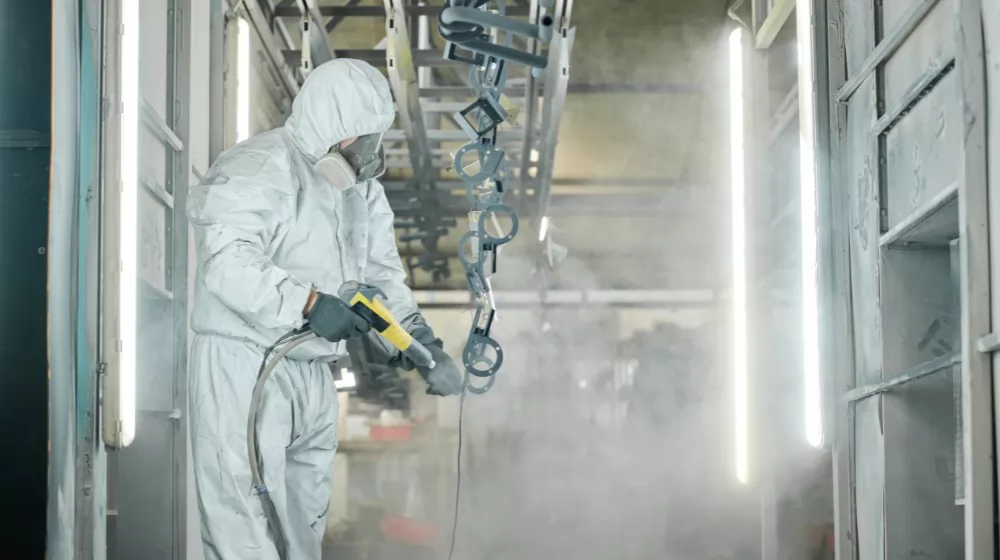
Ensuring the highest quality in powder coating requires rigorous quality control and testing procedures. These processes are integral to our operations as a leading powder coating manufacturer, as they guarantee that every coated product meets the highest standards of durability, appearance, and performance.
One of the key tests in powder coating quality control is the adhesion test. This test evaluates how well the coating adheres to the substrate. Various methods can be used, including the cross-hatch test, where a crosshatch pattern is cut into the coating and a piece of adhesive tape is applied over the cut. When the tape is removed, the amount of coating that comes off with the tape is assessed. A good quality powder coating will show minimal or no coating material on the tape, indicating strong adhesion.
Another crucial aspect of quality control is checking the thickness and uniformity of the coating. This is typically done using a non-destructive thickness gauge, which measures the coating thickness without damaging it. Uniform thickness across the surface ensures not only a consistent appearance but also uniform protection and performance. Thickness that is either too thin or too thick can compromise the coating's integrity, leading to issues like inadequate protection or cracking and peeling.
The efficacy of the powder coating process hinges significantly on the equipment used. Key components like powder coating guns, booths, and curing ovens play pivotal roles in ensuring the smooth execution and high-quality outcomes of the coating process. Understanding the function and importance of each piece of equipment is essential for anyone in the coating industry.
Powder coating guns are the heart of the application process. They are designed to apply the powder to the substrate in a precise and uniform manner. These guns use electrostatic charge to ensure the powder particles adhere to the surface until melted and fused into a smooth coating in the curing oven. The design and technology of the gun play a crucial role in the efficiency and quality of the coating process. Equally important are the powder coating booths. These specialized enclosures are designed to contain the powder within the application area, ensuring a clean and controlled environment. They also play a significant role in recovering overspray, allowing for the reuse of the powder and making the process more environmentally friendly and cost-effective.
Curing ovens are crucial in the powder coating process. After application, the coated items are placed in these ovens where they are exposed to high temperatures. This heat triggers the curing process, causing the powder to chemically react and form a hard, durable finish. The design and operation of the curing oven are vital for ensuring even heat distribution and maintaining the required temperature for the precise time needed to properly cure the coating. These ovens come in various sizes and types, from batch ovens for small-scale or custom jobs to conveyorized ovens for larger, continuous production runs. Their efficiency and consistency are key to the overall quality of the finished product.
In the realm of powder coating, the characteristics of the powder material itself are as crucial as the application and curing techniques. Two key aspects of this material are the particle size and distribution, as well as the available color and texture variations. A deep understanding of these characteristics is essential for achieving the desired finish and functionality in the final product.
The particle size and distribution in powder coating influence the application process, the finish quality, and the coating's overall performance. Powder particles need to be uniform in size to ensure a consistent finish. The finer the particles, the smoother and more uniform the coating will be. However, very fine particles may pose challenges in terms of application control and efficiency. Conversely, larger particles may result in a less smooth finish but can be easier to manage during application. The distribution of these particles is controlled during the manufacturing process, ensuring a consistent size throughout the batch. This uniformity is crucial for achieving an even coating thickness and a consistent appearance.
One of the most appealing aspects of powder coating is the wide range of colors and textures it offers. From high-gloss finishes to matte and textured options, the versatility in appearance is virtually limitless. This diversity allows for significant customization to meet specific aesthetic requirements or to adhere to brand standards. The color is achieved through the use of various pigments and dyes, which are mixed into the powder. Texture variations are achieved by adjusting the formula of the powder and the application process. Textured finishes can range from smooth to rough, offering different tactile experiences and visual appearances. These variations can also help hide surface imperfections on the coated item.
The versatility of powder coating extends far beyond its varied colors and textures. Its diverse applications across multiple industries underscore its effectiveness and adaptability. From industrial components to automotive parts and everyday consumer goods, powder coating is a preferred choice for a range of uses.
In the industrial realm, powder coating is revered for its durability and resistance to harsh conditions. It is widely used in the manufacturing of heavy machinery, agricultural equipment, and metal fabrications. The ability of powder coating to withstand extreme temperatures, chemicals, and abrasion makes it ideal for industrial applications. The automotive industry also heavily relies on powder coating for both functional and aesthetic purposes. It is used in coating car frames, wheels, bumpers, and numerous engine parts. Powder coating not only enhances the appearance of these parts but also provides a layer of protection against rust, corrosion, and the wear and tear of daily use.
Beyond industrial and automotive applications, powder coating finds its way into our daily lives through various consumer goods. From household appliances and furniture to sports equipment and electronics, its application is evident in many objects we frequently use. Its ability to offer a high-quality, durable, and attractive finish makes it a top choice for manufacturers of consumer goods. The safety and environmental benefits of powder coating, such as its lack of VOC emissions, also make it a preferred option for items used in home environments. This, combined with its versatility in color and texture, allows for seamless integration into interior design and home aesthetics.
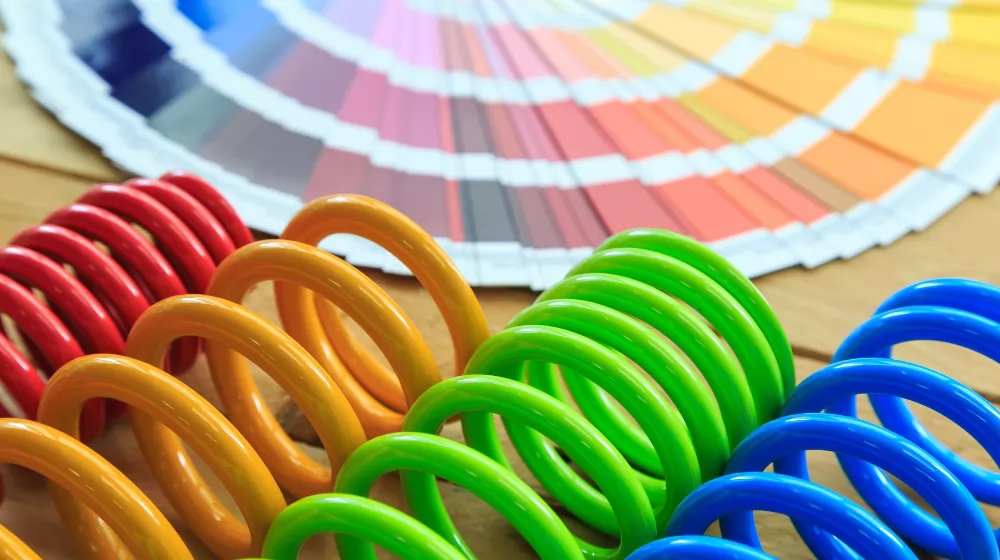
The adoption of powder coating goes beyond just surface-level benefits; it has profound environmental and economic advantages. Emphasizing sustainability and efficiency, powder coating stands as a responsible choice in the manufacturing sector.
One of the most significant environmental benefits of powder coating is its minimal emission of volatile organic compounds (VOCs). Traditional liquid paints release high levels of VOCs, which are harmful to the environment and human health. Powder coating, being a solvent-free process, drastically reduces these emissions, contributing to a healthier and safer ecosystem. This reduction in VOC emissions is not only beneficial for the environment but also aligns with increasingly stringent environmental regulations, helping manufacturers stay compliant and reduce their environmental footprint.
Economically, powder coating presents significant advantages. Its higher transfer efficiency – the amount of material that adheres to the substrate compared to what is used – means less waste and more cost-effective use of materials. Any overspray can often be collected and reused, further enhancing material efficiency. Moreover, the durability and longevity of powder-coated surfaces mean fewer applications over time, resulting in long-term savings on materials and labor. The efficiency of the powder coating process also translates to energy savings, as it often requires shorter curing times and lower curing temperatures compared to liquid painting.
While powder coating is a highly effective and efficient process, like any manufacturing technique, it comes with its own set of challenges. Common issues such as thickness and coverage inconsistencies, adhesion problems, and color mismatch are areas that require careful attention to ensure the highest quality finish.
Achieving the correct thickness and uniform coverage is a critical aspect of powder coating. Too thick a coating can lead to surface irregularities and poor curing, while too thin a coating may not provide adequate protection. Uneven coverage can also result in a patchy appearance. These issues are typically addressed through precise control of the application process, ensuring that the powder is applied evenly and in the correct quantity.
Adhesion problems can occur due to inadequate surface preparation, incorrect curing temperatures, or the use of incompatible materials. These issues can lead to the powder coating peeling or flaking off, compromising the protective and aesthetic qualities of the finish. Color mismatch is another challenge, especially when dealing with specific hues or when trying to match the color on an existing coated surface. This can be due to variations in the powder batch, differences in the substrate material, or inconsistencies in the curing process. Achieving the perfect color match requires precise formulation of the powder and consistent processing conditions.
In the ever-evolving field of powder coating, staying at the forefront of innovation and adhering to best practices is crucial. This involves not only enhancing application techniques but also proactively addressing environmental and safety concerns.
The advancement in application techniques is a key area of innovation in powder coating. Techniques such as electrostatic spray deposition have been refined to offer even greater efficiency and precision. Developments in powder formulations are also allowing for broader applications, including on substrates that were previously challenging to coat. Automation and control technology have made significant strides, enhancing the consistency and quality of the powder coating process. These technologies allow for more precise control of the thickness and uniformity of the coating, reducing waste and increasing efficiency.
Environmental and safety concerns are at the forefront of the powder coating industry. The move towards more environmentally friendly powder formulations continues, with a focus on reducing any potential impact on the environment and human health. Safety in the workplace is another critical area, with ongoing improvements in equipment design and operational procedures to ensure the well-being of personnel. This includes advancements in ventilation systems, protective gear, and training programs to promote a safe working environment for all employees involved in the powder coating process.
In conclusion, the journey through the vast landscape of powder coating reveals a world where innovation, quality, and sustainability converge. As we've seen, the advantages of powder coating extend across various industries, offering solutions that are not only aesthetically superior but also environmentally responsible and economically viable.
At the forefront of this evolving field is Wintoly, China's leading powder coating manufacturer. With a commitment to excellence and innovation, Wintoly continues to set the standard in the powder coating industry. We invite you to explore our range of powder coating solutions and join us in shaping a more durable, vibrant, and sustainable future.
Discover more about our products and how we can enhance your projects at www.wintoly-coatings.com. Embrace the power of advanced powder coating with Wintoly, where quality meets innovation.

 terrychen@wintoly.com
terrychen@wintoly.com
.png) 0086-757-85407388
0086-757-85407388
 6 Chaoyang Rd., National Demonstration Eco-industrialzone, Nanhai, Foshan,Guangdong,China
6 Chaoyang Rd., National Demonstration Eco-industrialzone, Nanhai, Foshan,Guangdong,China

.png)
